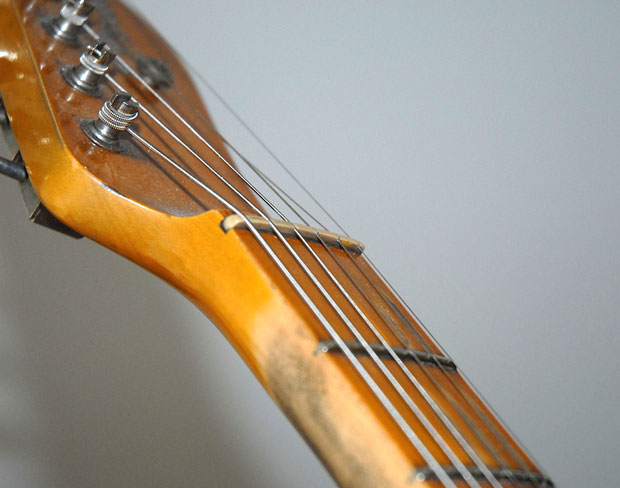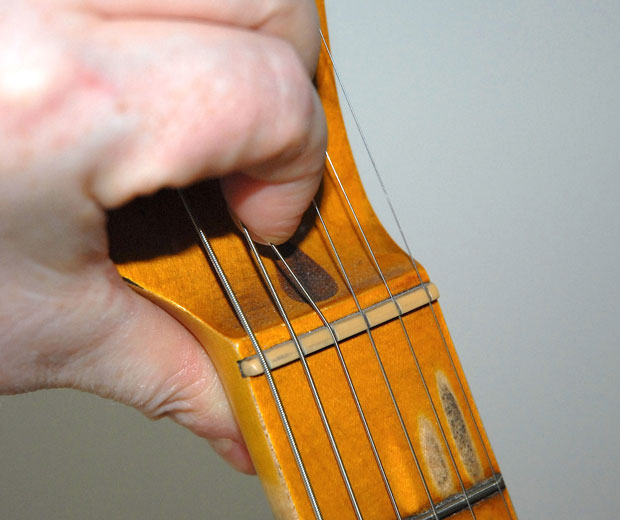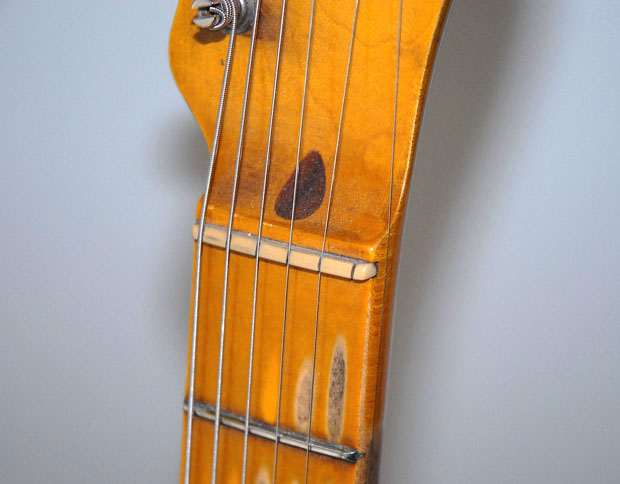Buying a Used Guitar: How to Check for Nut Damage
Don't overlook the parts of the guitar that will make or break its playability

Greetings, guitar tweakers. As promised in my last column, I’m gonna go nuts for a while.
Most of us don’t give our guitar’s top nut a second thought until something goes wrong. I bet the last time you bought a guitar, you didn’t spend much time checking the top nut, if at all.
We make a bigger fuss of scratches, dents and chips in the finish than the parts that influence the playability. We've all done it. We guitarists can be gripped with a bizarre hysteria when we are trying out a guitar we really want. It pays to take your time and pay attention to details like the top nut, especially if you’re about to drop your hard-earned cash on a used guitar that has no warranty.
The top nut is the unsung hero on a guitar’s spec sheet. Not only does it keep the strings where they should be, and evenly spaced into the bargain, it also conspires with the guitar’s bridge saddles and truss rod to set the action (or string height) to suit your playing style. So, when you’re looking over a used guitar, make sure the top nut is in good shape. You should always check that the guitar is in tune, too.
Eyeball the top nut closely for signs of damage; even hairline cracks can cause problems. They could eventually get worse, so it’s best to catch 'em early on. Insist on inspecting the string slots in the top nut. It’s the only way to be sure, as someone said in a movie once. You’ll have to detune the strings before you lift them out of the slots, so it’s probably best to ask the seller’s permission first. People can be a bit funny about stuff like that. With the strings out of the way, have a good look inside the slots (See photo 1 in the gallery below). If you see any cracks, I recommend that you figure the cost of a replacement nut into the guitar’s asking price.
Don’t back down on that unless the guitar is already a stone bargain and you can’t wait to get your hands on it. Pluck and listen to the open strings. If any of them are buzzing or rattling, it could mean the top nut slots are worn out or cut too wide for the gauge of strings fitted to the guitar. There’s an easy way to check if this is the case. Pull the string to the side behind the top nut (shown in photo 2, above, and in the gallery below).
Now pluck the open string with your other hand, naturally. If the buzz has improved or stopped altogether, it’s likely the string slot is too big. If you intend to fit a heavier gauge of strings, then this whole wide slot scenario could work to your advantage. It helps if the seller allows you to fit the fatter strings before you hand over your cash. Again, that all depends on your skills of negotiation.
All the latest guitar news, interviews, lessons, reviews, deals and more, direct to your inbox!
I’m going to cover rebuilding and recutting the slots in a top nut soon. Before that, I'll show you how to figure out if the slots are cut to the correct height (See photo 3 in the gallery below) and what influence the truss rod has on that. See you next time!



Ed Mitchell was Reviews Editor on Total Guitar magazine from 2003, and his guitar-modding column, Ed’s Shed, appeared in print on both sides of the Atlantic (in both Total Guitar and Guitar World magazines). He was the Editor of The Blues Magazine from 2012-16, and a contributor to Guitarist, Classic Rock and Louder. He died in October 2022, aged 52. Between them, the websites Guitar World, Louder and MusicRadar host over 400 of his articles – among them interviews with Billy Gibbons, Paul Weller, Brian Setzer, profiles on Roy Buchanan, Duane Allman and Peter Green, a joint interview with Jimmy Page and Jack White, and dozens of guitar reviews – and that’s just the ones that made it online.

